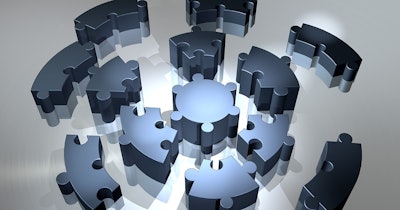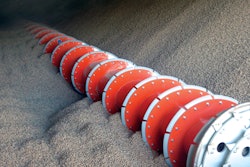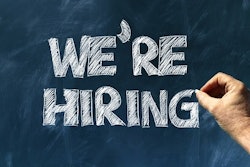
Your feed and grain business uses numerous assets, and, our guess is amongst all of them (grain bins, feed mixers, grain and feed trucks, buildings, etc.) that you own the majority of them. Owning the building where your business is located or owning a piece of equipment is not the only way to be able to have use of an asset — another option is to lease it. In this issue’s column, we will look at the pros and cons of both approaches.
Advantages of leasing
Less Initial Expense: The primary advantage of leasing is that it allows your feed and grain business to acquire an asset with minimal initial investment. Leases rarely require a down payment, which allows you to obtain the item without significantly affecting your cash flow.
Tax Deductible: Lease payments can typically be deducted as a business expense on your tax return, which reduces the net cost of the lease.
Flexible Terms: Leases are often easier to get and may have more flexible terms than a loan for buying an asset. This can be an advantage if you have poor credit.
Doesn’t Affect Your Leverage: Because obtaining an asset via a lease does not require your firm to incur debt, it does not affect any of the leverage ratios which bankers look at for making a loan to your business. Thus, by leasing an asset, you are not affecting your credit worthiness.
Easier to Upgrade Equipment: Leasing allows your business to address the problem of obsolescence. If you use a lease to obtain items that may soon become outdated — such as computers, vehicles or other higher-tech equipment — a lease allows you to pass the burden of obsolescence onto the lessor. This is often one of the key reasons to consider a lease.
Disadvantages of leasing
Higher Overall Cost: Leasing an asset is almost always more expensive than purchasing it. You have to decide if the advantages outlined above outweigh the expense.
You Don’t Own the Asset: When you lease, you don’t build any equity in the asset. This may not be an issue with equipment — particularly given the obsolescence argument above. This may be an issue, however, with real estate or buildings which typically appreciate in value over time.
Obligation to Pay for the Entire Lease: With a lease, you are obligated to make payment for the entire lease period — even if you stop using the equipment. Some leasing companies may offer the option of cancelling the lease if you find you don’t need the asset — but typically large termination fees apply.
Advantages of buying
Ownership: The key advantage of buying an asset is that you gain ownership of it. This advantage is most pronounced if the asset has a long useful life and is not likely to become technologically outdated.
Tax Incentives: Depreciation of an asset over time reduces your firm’s taxable income and is a way that the U.S. government indirectly assists businesses in asset purchase. In fact, Section 179 of the Internal Revenue Code allows a business to fully deduct the cost of some newly purchased assets in the first year of ownership. Assets that don’t qualify under Section 179 should qualify for regular depreciation deductions.
Disadvantages of buying
Higher Initial Expense: For some businesses, purchasing an asset may not be an option because the initial cash outlay is too much. Most banks require a down payment of about 20% on most purchases. Borrowing money also ties up capital you may need for lines of credit, or you may need those funds to fund your cash flow. A lender may also put restrictions on your future financial transactions to ensure you are able to repay your loan.
Getting Saddled with Old Equipment: While asset ownership can be an advantage as discussed above, it can also be a disadvantage. If you purchase equipment that has a technological component to it (computers, or equipment which has a computer tied to it), you run the risk of technological obsolescence, and you might be forced to reinvest in new equipment sooner than you had anticipated.
Some terms and additional considerations
Two general types of lease plans are available, and are distinguishable mostly by how they are treated for income tax purposes.
An operating lease is a contract that permits the use of an asset, but does not convey ownership rights of the asset. In the case of this type of lease, lease payments are reported as ordinary expenses on your company’s tax returns and are fully deductible.
A capital lease (sometimes called a finance lease) is a lease that is considered to have the economic characteristics of asset ownership. It is treated as a “conditional sales contract” by the Internal Revenue Service (IRS). Your business is considered the owner of the piece of equipment and you place it on your depreciation schedule.
Many capital leases are very similar to balloon payment loans set up for three to five years. The difference is that at the end of the lease period, the operator can still choose to either return the equipment/machine to the lessor and give up ownership, or make the final balloon purchase payment.
The North Central Farm Management Extension Committee has a good primer on Purchasing and Leasing (Farm) Equipment, which can be found at: https://bit.ly/2Ls7blt.
If you are considering a lease, you as the Lessee should obviously read the “fine print” in the lease agreement and ask questions before signing the lease. Some considerations for equipment/machinery/vehicle leases include:
- Who is responsible for maintenance and repairs? Generally, the operator is responsible, although leased machinery often carries the same warranty as purchased equipment. You should also clarify who is responsible for insuring the leased equipment.
- What are the purchase options at the end of the lease? How will the buyout price be determined if it is not specified in the contract? Are there adjustments for wear and tear?
- Is it possible to terminate the lease early, if you as the operator are not satisfied? Are there penalties for early termination?
- Is there a maximum number of hours (or miles in the case of a vehicle) the machine/vehicle can be used each year? What is the extra charge if your actual use exceeds this limit?
- What is the timing and frequency of payments? Does this match your cash flow pattern? When is the first payment due?
- Does the lease meet the requirements to be taxed as a true lease, or will the IRS consider it a Capital (or finance) lease?
- If there is property tax due on the machine, who pays it? In most leases the financial institution (or lessor) assumes this obligation and the cost is factored into the lease payments.
Should you buy or lease?
When deciding whether to buy or lease an asset, you should try to figure out the approximate net cost of that asset under each scenario. Economists state that the decision should come down to one of comparing the “net present value” of the after-tax cash flows associated with leasing versus purchasing.
Our discussion here has been fairly general, and we are not providing an example with numbers — in part because it is difficult to capture all of the decision factors.
One source we would suggest is an article by Dr. Stephen E. Miller, titled “Textbook Treatments of the Lease versus Purchase Decision."
In that article, however, you will discover that even when citing some of the experts in this area, they come up with conflicting strategies — depending on the specification of after-tax cash flow and discount rates. The “take home message” is that you need to capture tax breaks, resale value (residual value of the asset) — as well as the intangibles of whether the asset will become obsolete and your need for cash and/or ability to come up with sufficient capital for a down payment on a loan.
All of these things will help you determine which strategy is best for your feed and grain business. ■
Dr. John Foltz is Chair, Department of Animal Sciences, The Ohio State University, Columbus, OH, and Dean Emeritus, College of Agricultural and Life Sciences and Professor Emeritus, Department of Agricultural Economics and Rural Sociology, University of Idaho, Moscow, ID.
Dr. Joan Fulton is Professor and Associate Department Head, Department of Agricultural Economics and Center for Food and Agricultural Business.


















